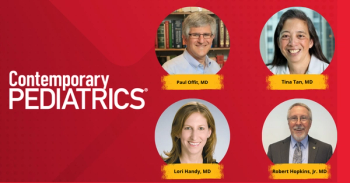
Clinical trial tests tool that sees tumor cells
Brain tumors are one of the most common pediatric cancers alongside leukemia and neuroblastoma. Now a new clinical trial aims to help surgeons better identify and remove tumor cells from healthy brain tissue for safer curative outcomes in children.
More than 10,000 new diagnoses of cancer in children aged younger than 14 years are expected in 2015, according to the
Investigators at Seattle Children’s Hospital, Washington, have just announced the opening of the
Although the 5-year
Despite an improvement in the efficacy of childhood cancer treatment, surgical removal remains the most effective-and most risky-treatment of brain tumors. Complete removal of a tumor is ideal but often is difficult to accomplish because even one cell left behind can spur continued tumor growth. On the other hand, removing the entire tumor can also result in loss or damage to normal brain tissue surrounding the tumor, causing a number of serious adverse effects.
Because children are so susceptible to brain tumors, and given their developmental stage, these adverse effects could be particularly devastating. However, the new therapy under development could improve surgical outcomes for cancer patients, and the new clinical trial will test the treatment against pediatric brain tumor cases.
Tumor Paint BLZ-100 was invented by
Olson says his patients inspired him to invent Tumor Paint because a surgical resection could mean the difference between life and death, or less adjuvant therapy such as
The BLZ-100 is the first Tumor Paint product candidate that is being developed for cancer surgery in multiple solid tumor types. The Tumor Paint is administered by intravenous injection prior to surgery and circulates within the body to “light up” cancer cells. It consists of an
Initial animal studies proved effective enough to advance BLZ-100 to human clinical trials more than a year ago, and trials are now under way in the United States at Cedars-Sinai Medical Center in Los Angeles. The Cedars-Sinai study focuses on adult glioma, and a duplicate study is running in Australia.
The glioma study is focused on documenting any adverse events associated with BLZ-100, as well as assessing pharmacokinetic parameters through monitoring of changes in blood concentration of BLZ-100. The study includes patients aged 18 to 75 years in need of a clinical resection for Grade I, II, III, or IV glioma. Patients with recurrent glioma were included in the study if the time frame between the last and new scheduled surgery was 3 months or more. Participants with metastatic disease and lactating or pregnant women were excluded from the trial.
The adult trial also required neutrophils, platelets, hemoglobin, aspartate aminotransferase, alanine aminotransferase, bilirubin, international normalized ratio, creatinine, and kidney function to be within certain prescribed ranges. Patients also were excluded who had a history of certain allergic or hypersensitivity reactions, uncontrolled
Australia is also running a trial using BLZ-100 in the treatment of skin cancer.
As for the new pediatric trial, Sarah Leary, MD, an oncologist at Seattle Children’s and principal investigator, says the focus of the study is not only to increase curative treatments in pediatric cancer, but to also find better treatment methods that take into consideration the whole child.
Many
In addition to imaging the highlighted tissue during the surgery, Seattle Children’s Department of Laboratory Medicine and Pathology will analyze the tumor tissue postoperatively to determine how effectively the drug worked in terms of highlighting tumor tissue.
Seattle Children’s was chosen to lead the trial because it has the largest Brain Tumor Program in the nation, as well as the most pediatric neurosurgeons in the Northwest. Leary says she hopes the trial will pave the way for Tumor Paint to become a standard of care in brain tumor surgery.
Leary says her team will publish a full report of the trial once it concludes. The main goals of the trial, she says, are to obtain safety information on using Tumor Paint in children with brain tumors and to collect information on how well Tumor Paint binds to tumors and whether it helps surgeon distinguish tumors from normal tissue during surgery. Future trials of Tumor Paint will evaluate whether Tumor Paint can improve surgical outcomes, increase survival, and decrease morbidity of brain surgery, she says.
The trial is open to patients aged 1 month to 30 years who plan to undergo surgery at Seattle Children’s either to attempt to remove an entire brain tumor or to have a recurrent or residual tumor removed. The trial will enroll up to 27 patients over the next 2 years, Leary says.
Blaze Bioscience is providing drug and study support for this new trial.
Newsletter
Access practical, evidence-based guidance to support better care for our youngest patients. Join our email list for the latest clinical updates.







